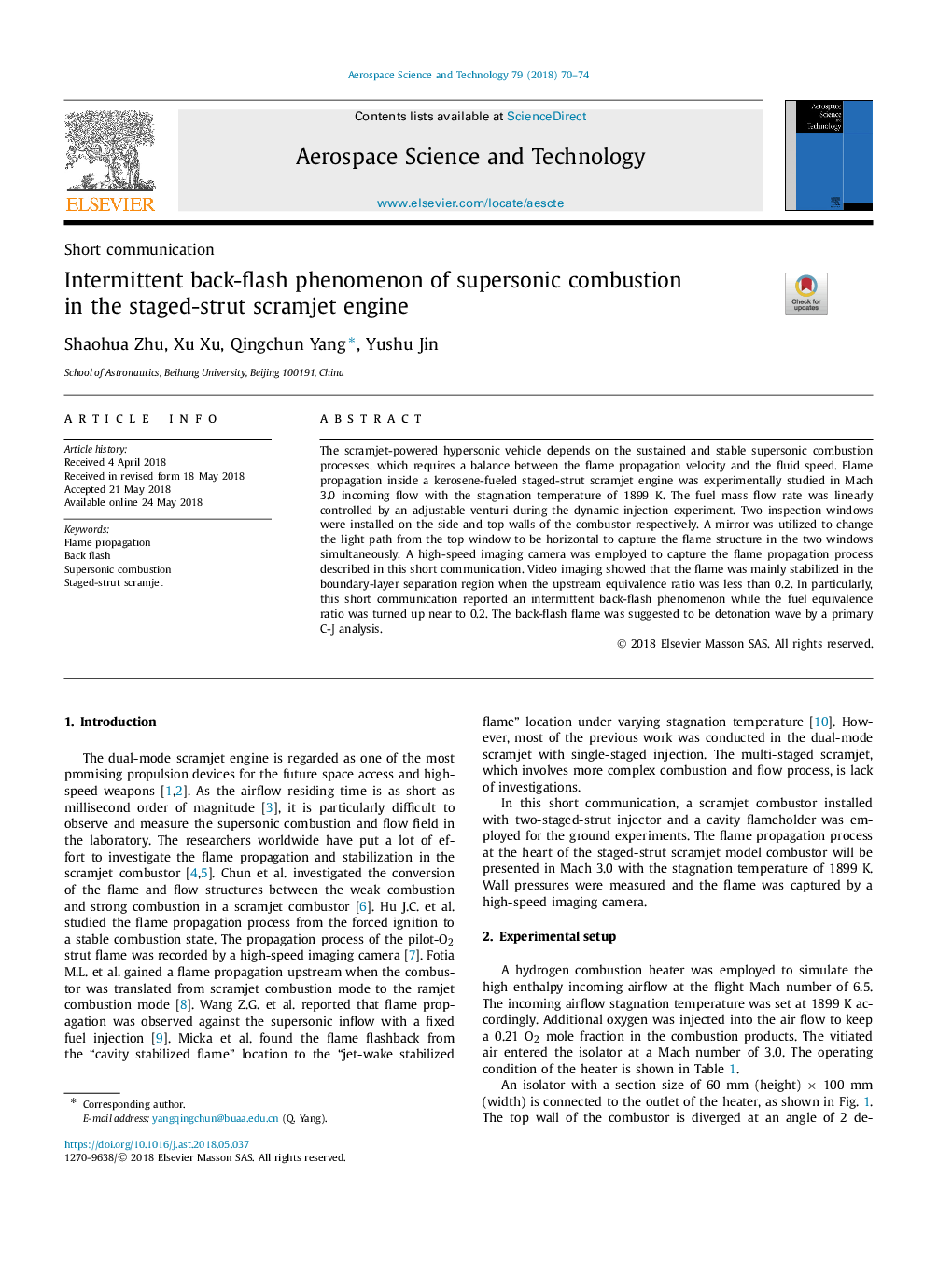| Article ID | Journal | Published Year | Pages | File Type |
|---|---|---|---|---|
| 8057330 | Aerospace Science and Technology | 2018 | 5 Pages |
Abstract
The scramjet-powered hypersonic vehicle depends on the sustained and stable supersonic combustion processes, which requires a balance between the flame propagation velocity and the fluid speed. Flame propagation inside a kerosene-fueled staged-strut scramjet engine was experimentally studied in Mach 3.0 incoming flow with the stagnation temperature of 1899 K. The fuel mass flow rate was linearly controlled by an adjustable venturi during the dynamic injection experiment. Two inspection windows were installed on the side and top walls of the combustor respectively. A mirror was utilized to change the light path from the top window to be horizontal to capture the flame structure in the two windows simultaneously. A high-speed imaging camera was employed to capture the flame propagation process described in this short communication. Video imaging showed that the flame was mainly stabilized in the boundary-layer separation region when the upstream equivalence ratio was less than 0.2. In particularly, this short communication reported an intermittent back-flash phenomenon while the fuel equivalence ratio was turned up near to 0.2. The back-flash flame was suggested to be detonation wave by a primary C-J analysis.
Related Topics
Physical Sciences and Engineering
Engineering
Aerospace Engineering
Authors
Shaohua Zhu, Xu Xu, Qingchun Yang, Yushu Jin,
